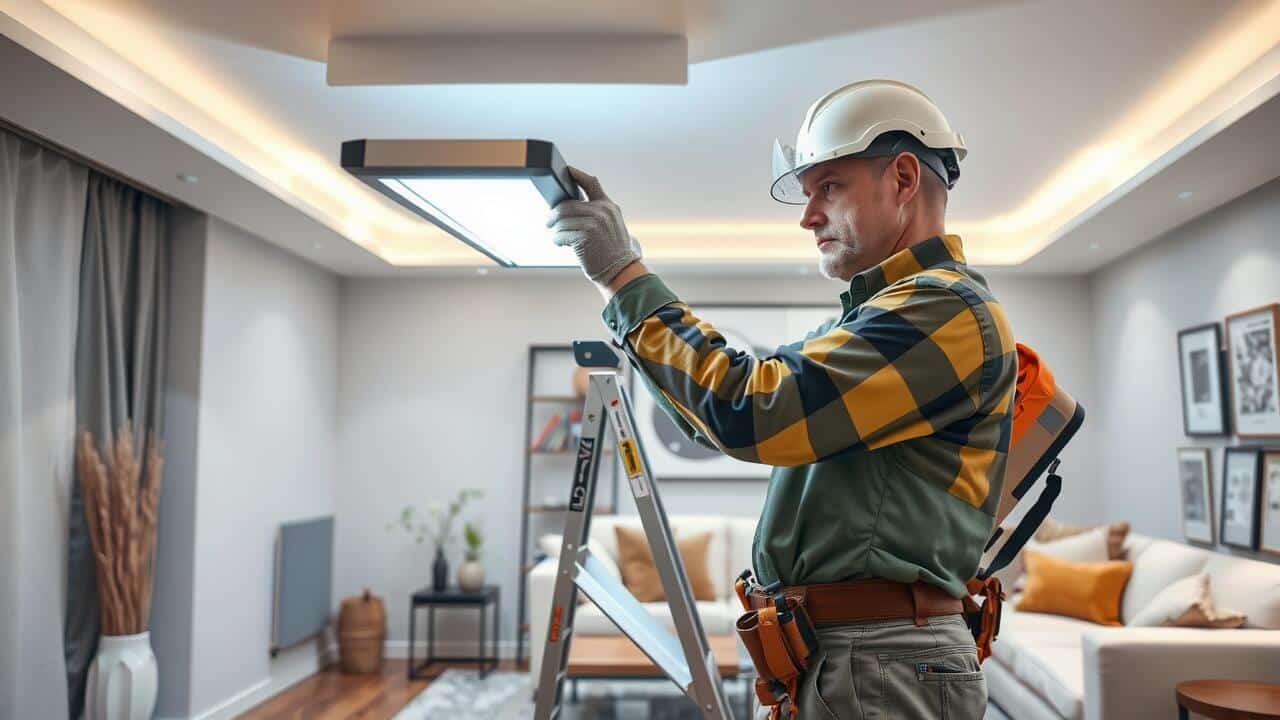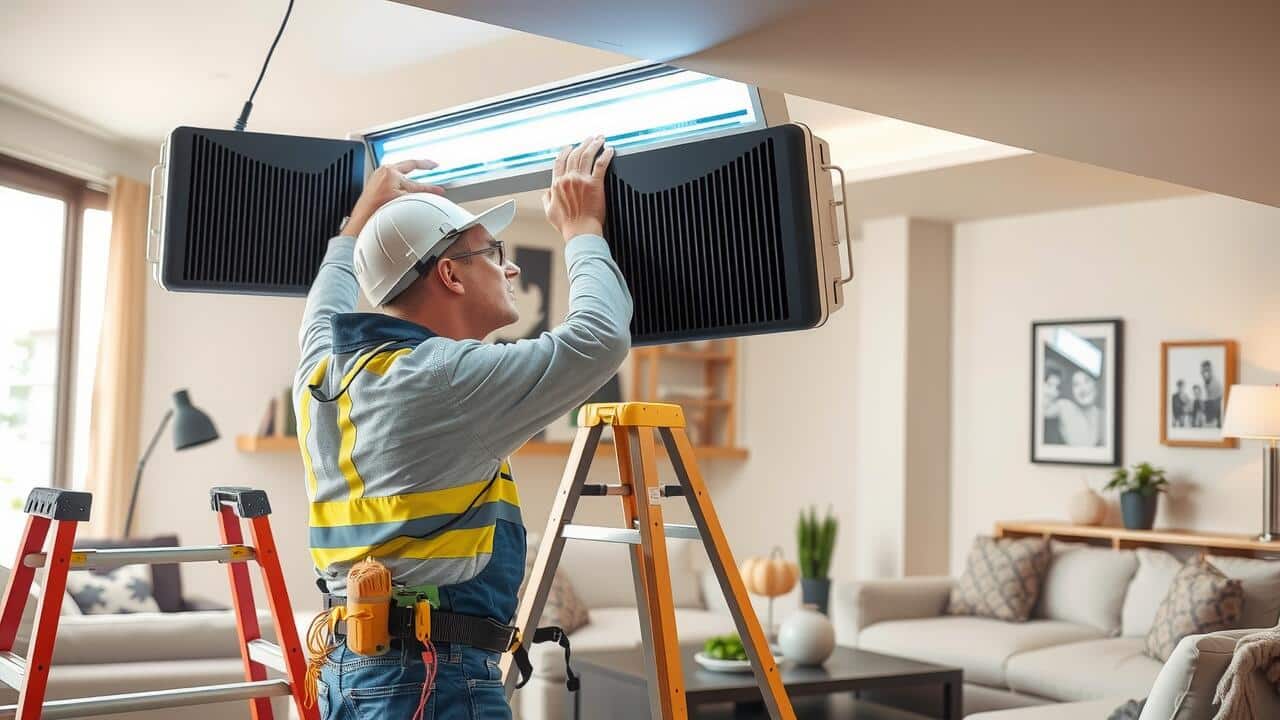
Table Of Contents
Comparing UV Lights to Other Air Purification Methods
In the realm of air purification methods, UV light installation stands out as a unique solution. Unlike conventional filters that physically trap dust and allergens, UV lights in HVAC systems utilize ultraviolet radiation to neutralize pathogens and mold spores. This technology can effectively reduce the presence of harmful microorganisms, creating a healthier indoor environment. While HEPA filters offer excellent particulate filtration, they can require frequent replacement and maintenance. In contrast, UV light systems can work continuously without the need for regular replacements, providing a consistent level of purification.
When comparing UV lights to other technologies, such as ionizers and activated carbon filters, several factors come into play. Ionizers generate charged particles intended to attract contaminants; however, they may produce ozone, which can be harmful in high concentrations. Activated carbon filters excel at removing odors and volatile organic compounds but do not eliminate biological contaminants effectively. UV light installation addresses both odor control and microbial disinfection, offering a multifaceted approach to air quality improvement. Each method has its strengths, necessitating a careful evaluation of individual needs and preferences before making a decision.
Effectiveness of Different Technologies
Various air purification technologies offer unique benefits in enhancing indoor air quality. HEPA filters are highly effective at trapping particulate matter, including dust and allergens. Electrostatic precipitators use charged plates to attract and capture particles, providing a different mechanism for purification. These systems have been widely used in settings that require exceptional air quality. Each has its strengths, though they may not address all bacterial and viral pathogens that can linger in the air.
UV light installation in HVAC systems presents a compelling alternative for tackling microorganisms that traditional filtration methods might miss. UV-C light has been shown to inactivate bacteria, mold spores, and viruses by disrupting their DNA. This capability can be particularly beneficial in environments where air quality is critical, such as hospitals or commercial kitchens. By combining UV light with other systems, homeowners can potentially enhance the overall effectiveness of their air purification strategy.
Installation Process for UV Light in HVAC
The installation of UV lights in HVAC systems requires careful planning and execution to ensure optimal performance. First, it is critical to select the appropriate type of UV light based on the specific needs of the system and the size of the space. Proper placement is essential, often requiring positioning near the coils or air handler. This positioning maximizes the exposure of circulating air to UV light, enhancing disinfection effectiveness.
Once the right equipment is chosen, UV Light Installation involves securing the fixtures to the HVAC system. Technicians normally need to ensure that electrical connections are safely made according to manufacturer specifications. Sealing any gaps and ensuring that the light is unobtrusive yet effective are also important considerations. Implementing these steps correctly contributes significantly to the long-term benefits that UV lights provide in improving indoor air quality.
Steps to Properly Install UV Systems
Proper UV Light Installation requires careful planning and attention to detail. Before beginning the installation, it is essential to familiarize oneself with the HVAC system’s layout and components. This knowledge helps identify the optimum placement for the UV lights, typically within or near the air handler or coil. Ensuring that the lights are positioned to maximize exposure to the air stream enhances their effectiveness in neutralizing pathogens and allergens.
The installation process involves turning off the HVAC system to ensure safety. Following that, mounting brackets are secured to the designated area. The UV lights can then be attached, typically requiring minimal wiring to connect them to the power source. Once the installation is complete, it’s crucial to conduct a thorough check to ensure the system operates correctly. Regular maintenance checks will also be necessary to keep the UV lights functional over time.
Effectiveness Against Allergens and Pathogens
Research indicates that UV light installation in HVAC systems can significantly reduce the presence of allergens and pathogens in indoor air. These systems work by using ultraviolet radiation to inactivate microorganisms, including mold spores, bacteria, and viruses. Studies show that exposing these pathogens to UV light can disrupt their DNA or RNA, rendering them harmless and less capable of causing illness or allergic reactions.
The effectiveness of UV light installation is particularly notable in environments where air quality is a major concern. Incorporating UV light technology not only helps in controlling mold growth within the HVAC system but also improves the overall air quality circulating in living spaces. This approach serves as a valuable addition to a comprehensive air purification strategy, complementing other methods such as HEPA filters or chemical air cleaners.
What Research Suggests
Numerous studies support the efficacy of UV light installation within HVAC systems for improving indoor air quality. Research has shown that UV-C light can significantly reduce microbial growth within air ducts. Tests indicate that systems equipped with UV light have lower concentrations of bacteria, viruses, and mold spores. This reduction contributes to a healthier environment, particularly for individuals with allergies or respiratory conditions.
Furthermore, the effectiveness of UV light installation varies depending on factors such as the intensity of the light and duration of exposure. Different configurations of UV systems can lead to varying success rates in eliminating airborne pathogens. Studies suggest that frequent maintenance of the UV system is also critical to ensure optimal performance and longevity. Overall, the data indicates a promising role for UV light technology in enhancing the safety and comfort of indoor air quality.
FAQS
What is the main purpose of installing UV light in HVAC systems?
The primary purpose of installing UV light in HVAC systems is to improve indoor air quality by reducing harmful microorganisms such as bacteria, viruses, and mold spores, which can thrive in the warm, dark environments of ductwork.
How do UV lights compare to other air purification methods?
UV lights are effective at sterilizing air and surfaces, but they work best in conjunction with other air purification methods, such as HEPA filters or ionizers. Each method has its advantages, and the choice often depends on specific air quality needs.
What is the installation process for UV lights in HVAC systems?
The installation process typically involves finding an appropriate location within the HVAC system, securely mounting the UV light fixture, connecting it to the power source, and ensuring it is properly sealed to avoid UV light exposure outside the system.
Are there any safety concerns with UV light installation in HVAC?
Yes, safety concerns include potential exposure to UV light for maintenance workers and the need to ensure that the UV light is properly shielded to prevent any harmful exposure. Always consult a professional for safe installation.
What research supports the effectiveness of UV lights against allergens and pathogens?
Various studies suggest that UV lights can significantly reduce viral and bacterial load in the air and on surfaces. Research indicates that when used correctly, UV lights can help to lower the transmission rates of airborne diseases and improve overall air quality.
